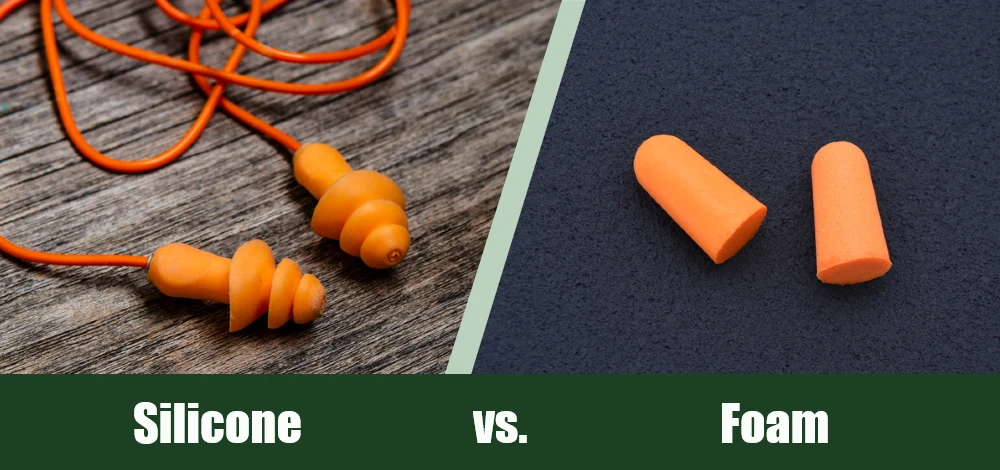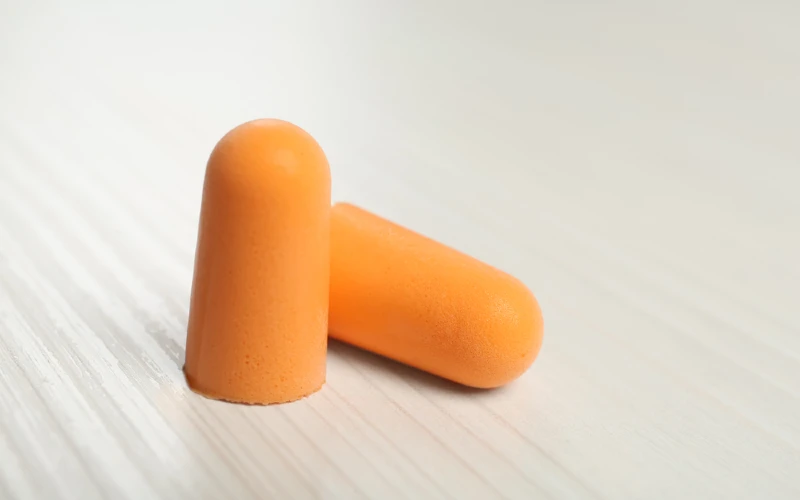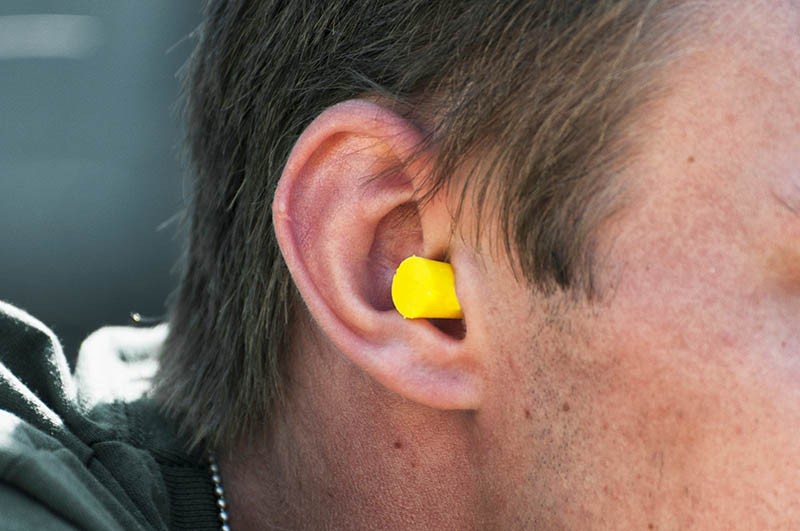Silicone vs Foam Ear Plugs: Which Should You Choose?
-
- Last updated:

There’s no denying that earplugs are versatile instruments. You could use them as protective devices while swimming, to reduce the noise in your immediate surrounding, or to improve your quality of sleep. While shopping for items of this nature, you have to take into consideration the material used in production.
Of course, it goes without saying that different materials offer different benefits. What’s more, they all have downsides, some of them being uncompromisable. In this guide, we’ll be looking at the differences between silicone and foam earplugs. Hopefully, at the end of it, you’ll be able to make an informed decision as to which is right for you.

Silicone Earplugs

These types of earplugs come in two iterations. When you go out shopping, you’ll either find the soft silicone variant, or the hard silicone earplug. Some users prefer calling the soft iteration “moldable silicone plugs,” because they often deliver a level of comfortability and softness that’s similar to wax earplugs to a certain degree.
The prime advantage of silicone earplugs is the fact that they are reusable. If you’re the type of person who doesn’t mind frequently cleaning his/her/their devices, they’ll serve you for an extended duration. Truth be told, moldable soft earplugs are not as easy to clean as the hard variant, but they have the same lifespan.
Silicone earbuds are usually available in three flange options. Therefore, depending on your preference, you can either go for the single flange, double, or triple. These earplugs have a medium to high occlusion effect and rarely cause ear irritation.
Are they effective at reducing noise? Yes, but they do so in environments that are characterized by moderate to slightly high noise decibels. For example, traffic noise. If you’re about to walk into an industrial plant, construction site, or any other environment with deafening noise, go for the foam iteration.
The other area that the silicone earplug fails in is in how it handles sweat. While some of the new models are resistant to the effects of moisture, most of them are still susceptible to it. That’s why most of the time you’ll find people who love exercising opting for the foam earplug.
- Hard silicone earplug is easy to clean
- Don’t cause ear irritation
- Has three flange options
- Comfortable
- Reusable
- Noise reduction effectiveness is medium
- Soft silicone earplugs are difficult to clean
- Can be damaged by sweat

Foam Earplugs

If this was a popularity contest, the foam earplug would have taken the cake. These plugs are normally produced using memory foam, hence the name “Foam Earplug”.
Foam earplugs are not easily moldable. And that’s a huge concern to any user who doesn’t want to work with an earplug that can cause ear pressure. In situations where they are required for prolonged use, there’s no iota of doubt in our minds that they’ll cause discomfort. What’s worse, if you’re the type of person who has sensitive ears, the fact that these plugs are designed to enter the ear canal means you’re most likely going to experience some form of ear irritation or itching.
For the record, foam is naturally porous. And as you might have heard, porous materials are hubs for bacteria. Hence the reason why you’re advised by medical experts to frequently replace your plugs if they are made of foam, or risk battling an ear infection. Cleaning these earplugs is not that difficult, though. You only need soap, water, and a cleansing gel to get the job done.
Are they suitable for outdoor use? Yes. Some would even argue that their extreme sound isolation makes them the best on the market, for runners or people working in hazardous environments. Also, they have a very low occlusion effect.
When it boils down to usability, silicone earplugs are easier to insert. You just have to push them in and that’s it. Unlike the foam iterations that have to be rolled before being squished, and then pushed in.
- Affordable
- Easy to clean
- Effective at noise cancellation
- Low occlusion effect
- Ideal for users who prefer disposable plugs
- Not reusable
- Susceptible to bacteria
- Difficult to insert
- Not ideal for prolonged use

Silicone vs Foam Earbuds: Factors to Take into Consideration

Quality of Sound
Our ears are not always symmetrical. And this is one of the reasons why you’ll hear people complain about how they experience sound differently in the right or left ear.
If one of your ears is larger than the other, you’ll need an earbud made of a material that’s able to mold into the shape of the canal. That snugly fit will rectify the problem, thus delivering the ultimate user experience.
In other words, for better sound quality, always go for the foam earbud. Silicone won’t feel as comfortable, and even if it does, it has a tendency to drown out higher frequencies.
Isolation of Sound
One of the main roles of an earbud is to completely seal the ear canal. By doing so, it blocks out all the noise in the background, leaving you feeling relaxed. Unfortunately, not all buds are effective due to their material.
Foam earbuds are again highly favored when it boils down to sound isolation, as they offer the most effectual protection against high-decibel noises.
If silicone earbuds are the only buds accessible, and you desperately need something to help you drown out unwanted noise, go for the double or triple-flanged silicone buds. They are not as good as foam, but close enough.

Design
Speaking of flanges, comfort is also influenced by the earbud design. From our past experiences, double and triple-flanged buds are usually more comfortable than singles, especially if they are worn for an extended duration.
Occlusion Effect
Have you ever heard a “booming” or “hollow-like” sound being produced between the earplug and ear drum anytime you chew something? That’s what the occlusion effect is. And in some cases, depending on the type of buds you have on, it’s relatively louder. If your buds are made of silicone, the effect will be higher, consequently boosting the low-frequency sound pressure in your ear canal.

Conclusion
We honestly cannot tell you which earbuds are good for you because we all have different preferences. All that matters is that you take into consideration the pros and cons of each material, before making an investment. Foam earbuds are great, but not reusable. They are also affordable and comfortable but prone to bacteria. So, it’s up to you to decide which best suits your needs.
Featured Image Credit: Left – Silicone Earplugs (Love Silhouette, Shutterstock) | Right – Foam Earplugs (artfotoxyz, Shutterstock)
Contents

